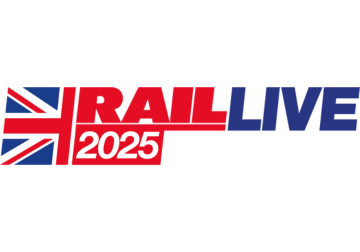Philip Haigh looks at the circumstances and chain of events that led to a collision at Redcar.
RSSB delivers new signs to cope with multi-mode trains
Philip Haigh looks at the circumstances and chain of events that led to a collision at Redcar.
RSSB delivers new signs to cope with multi-mode trains
Grand Central’s order of nine five-car trains from Hitachi is the latest in a line of multi-mode trains able to operate from more than one power source.
In Grand Central’s case, its new trains will run on diesel, battery, or take power from overhead line equipment (OLE).
Switching to or from OLE has traditionally taken place at stations, with the train not moving. But increasingly trains and infrastructure can cope with switching on the move, and for this RSSB has developed a range of lineside signs.
These signs warn drivers of approaching changeovers, and provide the start and finish points for the switch. Examples now sit in the latest update to RSSB’s Rule Book.
The new signs include a pair of white semi-circular arrows on a black background that tell drivers when to switch to a self-powered system (that is from OLE power to diesel or battery).
A sign with a red cross imposed over the usual ‘raise pantograph’ sign (two partially concave white vertical bars on black) shows the point after which a driver must not raise a pantograph.
The Rule Book now includes temporary versions of power changeover signs. As with temporary speed restrictions, these signs have a yellow background, and the warning sign that sits before a lower pantograph sign includes two white flashing lights.
This warning sign is triangular, but the others for lowering, raising and ‘do not raise’ are square with black symbols on yellow in the same format as permanent white on black signs.
RSSB says that these yellow signs would be used when drivers must temporarily switch power mode because of OLE damage or engineering work.
Routine tasks go wrong when they’re interrupted by something unusual or unexpected.
That’s when the true level of someone’s understanding becomes clear. Last May’s level crossing collision at Redcar is a case in point (RAIL 1033).
The signaller in Redcar box tried to clear a signal for a westbound train. It wouldn’t clear because the level crossing barriers over West Dyke lay open to road traffic.
At the same time, a small red light on the signaller’s panel failed. This left the signaller not knowing what aspect the signal displayed (it was red of course), but suspecting that something was wrong with his equipment when it would not switch to green.
The only thing that was actually wrong was the panel’s bulb failure, and the signaller was reporting this by phone when the train’s driver called his box as he waited at the correctly lit red signal.
So, the signaller authorised the driver to pass the signal at danger. Before doing so, he should have checked that West Dyke level crossing barriers were closed to road traffic and that the crossing was clear.
Just to complicate matters, the signal in question protected two level crossings. The driver approached the first one cautiously, as the Rule Book requires, and seeing it was clear then increased speed.
As he approached West Dyke, the driver could see that the crossing was clear, but he could not see whether the barriers were closed to road traffic.
They were not, as we know. And just as the train reached the crossing, a car turned onto it and into the path of the train.
The collision was minor, with the left side of the train hitting the front right side of the car. It happened at 0923 on May 1 2024, and by 1435 the car had been taken away and the train was fit to be driven under its own power to the depot.
There’s an oddity to West Dyke that played a part in this accident. It is unique among Network Rail’s level crossings in having sliding gates, rather than the more usual lifting barriers. They date from 2015, when NR replaced an unreliable set of boom gates.
These boom gates were a peculiarity of railways in North East England. Each swinging gate had an electric motor mounted to their underside which drove a rubber wheel that rolled the gates over the level crossing’s surface to open or close.
The new gates lie parallel with the railway, sliding across the road when closing. And although Redcar box sits next to the crossing, the signaller can’t see the gates from his usual operating position at the control panel. He has to get up and walk over to a window to see them and to operate their controls.
So close is the box that there was no room for conventional lifting barriers. Had there been, then it’s possible the approaching train driver might have seen their tips lofted in the air and realised the crossing was open to the road, slowing his train accordingly.
Had this crossing been the problem, the driver might have expected the signaller to specifically warn him. But there was no warning because the signaller had forgotten they were open.
Forgotten because of the distractions. Forgotten because of the box’s poor layout and ergonomics. And forgotten because the signaller wasn’t as competent as you’d expect.
In a previous position at Stonea box, he had been placed on a support plan after failing routine knowledge assessments.
This plan lasted until April 2022, but that September he authorised a train to pass a signal at danger without checking the line was clear. Another support plan followed, and it ended just before the signaller left Stonea for Redcar in early 2023.
After learning Redcar, he started duties there in April 2023, but was on another support plan from June after not complying with the standard needed for communication.
Two formal improvements plans followed before NR stood the signaller down for retraining, after the signaller granted a line block to maintenance staff incorrectly in October 2023. He returned to work in January 2024 after passing rules assessments.
Following the collision, the signaller (Lennon Tambula, now 32 and of Douglas Walk, Stockton) admitted at Teesside Magistrates’ Court in October 2024 to endangering by wilful omission or neglect the safety of a person conveyed or being in or upon the railway. The court ordered him to pay £317. He still works for Network Rail, but not as a signaller.
Events that May morning conspired against him, but his record strongly suggests that he did not have the aptitude to signal trains.
Yet he’s not the first signaller to forget about level crossing barriers. In August 2017, there was a near miss at Watlington station, when the barriers of Magdalen Road level crossing lifted just in front of a train leaving the station and as a car crossed.
They had lifted automatically following the passage of another train in the opposite direction. But the near-miss train had been authorised to pass a signal at danger, with the signaller thinking that its failure to clear was related to a track circuit failure nearby.
Had the signal cleared properly (and an examination by the Rail Accident Investigation Branch could not discover why it didn’t), then the barriers would have remained lowered, held in place by the interlocking.
But because the signaller authorised the driver to pass it at danger, the signaller should have put the barriers into manual control, preventing them lifting until the signaller wanted them to.
Magdalen Road was one of two incidents (the other was at Woodnesborough in Kent, in September 2023) that prompted Network Rail to look into the way it protects level crossings from approaching trains - known as signal overrun protection. Such protection automatically closes a level crossing to road traffic as a train approaches, if it is not already closed.
NR issued a special inspection notice to this effect in November 2023, to trigger checks around the country. The team responsible for Redcar first met in January 2024, to start reviewing 161 level crossings, finding that 102 needed action to meet current standards and 36 having no overrun protection.
When Network Rail installed West Dyke’s sliding gates in 2015, it expected to shift control of the level crossing to a remote signalling centre by 2022, allowing it to demolish Redcar’s signal box (which dates from 1937) and create space to install conventional lifting barriers.
With such a short planned life, it was not cost-effective to install new controls that incorporated overrun projection. However, NR has since removed Redcar from the signalling upgrade plan and instead plans to extend the box’s life in 2026.
This gives the opportunity to fit overrun protection, and perhaps revise the interior layout of the box to make it easier for signallers to operate.
Login to continue reading
Or register with RAIL to keep up-to-date with the latest news, insight and opinion.



















Login to comment
Comments
No comments have been made yet.